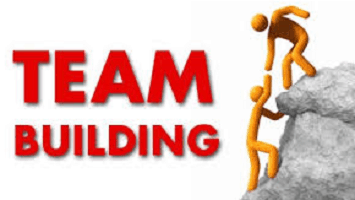There is no greater means of achieving long-term success than by building a great team. To select the right team members, you need a reliable method of repeatedly making the right choices.
Interviewing is an art just as much as it is a science. Whether you are a manager or a business owner, chances are you have given some thought to the questions you might ask in order to learn more about how a candidate will perform on the job and as a member of your team.
As we have talked about many times on our blog – it is expensive, and even destructive, to hire the wrong employee. This is why interviewing as a decision-making tool is extremely important and why you must make the best use of the time that has been set aside for interviewing a prospective new team member.
Some simple guidelines for interviewing include the following:
- Get the candidate talking
Don’t ask questions that can be answered with a “Yes/No” answer. The more they talk, the better sense you will have as to who they really are. - Don’t do all the talking yourself
While it is fine to briefly answer the candidate’s questions about the position and the organization, this is not the place to take over the conversation with long descriptions. This time is valuable, and your goal is to come out of this meeting with a decision of “Yes”, “No” or “Maybe” about this candidate.
descriptions. This time is valuable, and your goal is to come out of this meeting with a decision of “Yes”, “No” or “Maybe” about this candidate. - Don’t let the candidate ramble
Candidates are often nervous and that can lead to long answers to questions that go beyond what you need to know. Don’t hesitate to jump in with another question when the candidate has moved past that point.
Read More: Five Ways Your Hiring Process Can Lose Top Talent (And How To Stop It)
The Key to Good Interviewing Questions: The STAR Technique
The STAR technique has been increasing in popularity among interviewers. STAR stands for Situation, Task, Action, and Result. This technique is a means to assess a candidate’s competency for a given role by asking questions, such as:
 “Tell me about a time where you had to lead your team through a tough situation”, or
“Tell me about a time where you had to lead your team through a tough situation”, or
“Share an example of a time where you had to handle a customer complaint about an employee”.
These types of questions help to assess how a candidate has handled situations in the past and their thought processes.
Using the STAR – Key Concepts Interviewing Techniques
Here are some guidelines for using the STAR technique when interviewing. The following is the type of answer that you are looking for from a candidate:
- Situation – What is the context in which you performed the job or what was the time/place of the example you’re about to share? This should be brief, ex. “When I worked at Company Manufacturing as Manufacturing Specialist, I had a boss who was unavailable.” This should be specific, but short and sweet.
- Task – Now, describe what the task was and what responsibility you had in the task. This should also be rather short. Using the situation above, an example would be “I had an issue with a big delivery that was coming in for our top customer – it was going to be late and the customer was picking it up in order to meet a deadline we committed to.”
- Action – Here is where you want to spend the bulk of your time. This is the area where you will learn how the candidate performs as an employee. Tell them to walk you through the steps they took. Using our situation, “My boss was not answering his phone, so I confirmed with our supplier that the delivery was going to be late by 2 days. I then contacted another supplier and worked out a similar delivery that could be delivered on time for our client, and I worked with our retention department to discount the client’s invoice since it wasn’t their regular supplier that they prefer. I then called the client ahead of time, explained what happened and the outcome.”
- Result – Quick and simply, explain what happened as a result of the action taken e.g., “The client didn’t mind that the delivery was from a different supplier, thanks to the discount, and was happy that we delivered on time. Next time they ordered, they actually preferred the products from the new supplier, so we built a new relationship with the alternate supplier and never had an issue with on-time delivery moving forward.” This area can be a measurable result, or it can be what they learned or a summary of what they changed moving forward.
Coach the candidate with how you want them to answer, and if they are new to the STAR method of answering, feel free to prompt the candidate with what step you are looking for next. Allow them to take a minute to think before they answer as well – it can take time to think of answers in this format for the first time.
Read More: Hire The Best, Forget The Rest
Why Is This Important?
Determining the competencies of your candidate is important for deciding if the person is going to be a good fit for your team. Regardless of how good they look on paper, it is important to assess how they react in a real-world situation. Using the STAR technique can help you to see them in that type of situation.
Ensure You Have the Right Questions for The Job
 Your interviewing technique is only as good as the questions you ask, so make sure to take the time before an interview to research and carefully plan each question so that you are able to explore all aspects of the requirements of the position with the candidate, both the specifics of the job and the overall “team fit” questions that are just as important.
Your interviewing technique is only as good as the questions you ask, so make sure to take the time before an interview to research and carefully plan each question so that you are able to explore all aspects of the requirements of the position with the candidate, both the specifics of the job and the overall “team fit” questions that are just as important.
Kathbern Management is an executive search consultancy based in Toronto, helping companies find the executives and senior managers who not only have the experience and credentials to fulfill their responsibilities, but also have the emotional and “fit” requirements that will enable them to be successful in a particular environment. We simplify the process and, through our deep research, are able to bring more and better candidates forward than would ever be possible through a do-it-yourself passive advertising campaign.
Contact us today for a free consultation about your key person search.

